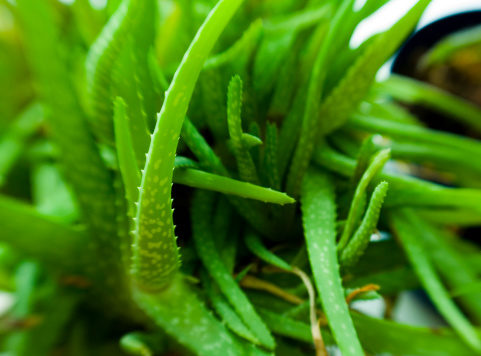Washington, D.C.—Oral aloe vera has many beneficial properties, but the Center for Science in the Public Interest (CSPI), based here, recently gave aloe vera an “avoid” rating in its Chemical Cuisine food additives guide.
CSPI’s main reason for having aloe vera join the company of artificial colors, aspartame, trans-fats and other additives in the “avoid” category is that the International Agency for Research on Cancer studies connected oral aloe to intestinal cancer in rats.
The agency studied non-decolorized whole-leaf aloe vera extract, which is believed to contain cancer-causing components (aloin and other anthraquinones). This point is somewhat of a non-starter, experts say; in fact, there are few products on the market that are non-decolorized. Thus, condemning the entire oral aloe category is irresponsible.
Devon Powell, chief operations officer at the American Herbal Products Association and executive director at the International Aloe Science Council (IASC), speaks of the more-common decolorized/purified products, noting that many IASC member companies have published safety studies showing no carcinogenic effects in mice/rats given these aloe products. “We believe these studies clearly demonstrate that decolorized/purified aloe vera products manufactured in compliance with IASC certification program standards and taken as directed are safe for consumers,” he states.
Decolorized products have low levels of aloin. This purification process—which most products on the market go through—uses activated charcoal filtration step to remove toxic compounds from aloe vera. In fact, Powell explains that aloin has been a known concern since the early 1980s. Since then, filtration processes to remove this component from aloe have been promoted.
“Because of the charcoal filtration manufacturers use to reduce the aloin content, all of the negative components that aloe has is reduced or removed,” states Jack Brown, vice president of sales and marketing at Lily of the Desert, Inc. “Non-decolorized whole-leaf aloe vera has about 13,000 ppms of aloin. Lily has less than 1 ppm. Big difference.”
Brown adds, “If they are filtered down or removed, then the plant is harmless and people can receive all of the other benefits that aloe provides. Aloe has been around about 4,000 years and in that time, we have learned a lot about the plant and how to consume it.” His firm published a study in the journal Toxicology this year to underscore the safety of its products.
CSPI also suggests that the benefits of aloe aren’t proven, and there are downsides like a laxative effect and a possible link to acute hepatitis. But again IASC counters that this issue is related to aloin, a component removed from most aloe products.
“What was and continues to surprise us is the continued proliferation of misinformation about aloe vera and the NTP/NCTR studies in particular,” states Powell. “Given that aloin is a powerful laxative, it should be obvious if consumers are or have been using non-decolorized products, and the IASC actively discourages their use.”
Powell believes shoppers have any reason to avoid purified oral aloe products, based on numerous safety studies. “We believe consumers should have no concerns with aloe vera products displaying the IASC certification program seal. We actively discourage consumers from purchasing and using non-decolorized aloe vera products,” he states.
Published in WholeFoods Magazine, October 2013 (online 9/5/13)










